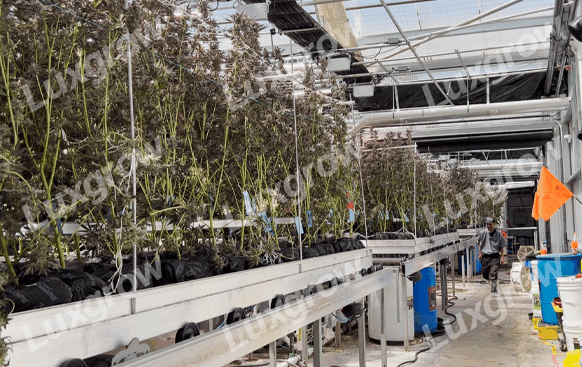In the world of horticulture, the choice of lighting is crucial for the growth and health of plants. This article delves into the distinctions between greenhouse and indoor grow lights, providing comprehensive insights to help you make informed decisions for your gardening needs.
Spectrum Range: Greenhouse lights typically offer a full spectrum of light, mimicking natural sunlight. This includes both blue and red wavelengths, which are essential for photosynthesis and flowering.
Intensity: These lights are designed to cover larger areas, providing uniform light distribution across multiple plants. They often have higher wattage to penetrate through the greenhouse structure.
Heat Management: Many greenhouse lights are designed to emit less heat, reducing the risk of overheating plants and maintaining optimal growing conditions.
Greenhouse grow lights are mainly used in greenhouse environments, which are usually larger and can control temperature and humidity to provide plants with better growing conditions. The design of greenhouse grow lights takes into account the special characteristics of greenhouse environments, and usually provides stronger light and a larger coverage area to promote plant growth and development. In addition, greenhouse grow lights may need to consider more energy efficiency and thermal management to ensure stability and efficiency during long-term use.
Indoor grow lights are tailored for use in enclosed spaces where natural light is insufficient. They are ideal for home gardeners, urban farming, and indoor plant enthusiasts.
Compact Design: Indoor grow lights are generally smaller and more versatile, allowing for easy placement in various indoor settings.
Adjustable Spectrum: Many indoor lights come with adjustable spectrums, enabling users to switch between vegetative and flowering phases as needed.
Heat Emission: Indoor grow lights can produce more heat, which may require additional ventilation or cooling systems to prevent plant stress.
Indoor grow lights are more used in indoor environments such as homes or offices, which are usually smaller in size and do not require strict control of environmental conditions like greenhouses. The design of indoor grow lights focuses more on portability and energy saving, while taking into account the requirements of indoor environments for light quality and distribution to ensure the best growing conditions for plants in limited spaces. In addition, indoor grow lights may focus more on aesthetics and decorativeness to adapt to different interior designs and styles.

In general, the main differences between greenhouse grow lights and indoor grow lights are their use environment, design purpose, energy efficiency, and thermal management. Greenhouse grow lights tend to provide more powerful light and better environmental control, while indoor grow lights focus more on portability, energy saving, and adaptability to indoor environments.
Luxgrow is developed by photology engineers and more than 13 years R & D engineers team in led lights
As a professional and rich experience grow light designer and manufacturer for indoor greenhouse farms ; Luxgrow really knows offer the exclusive customized layout service is very necessary and cost-efficient.
We offer free exclusive customized layout service for customers , not only in the lighting configuration help,but also help you know the budget